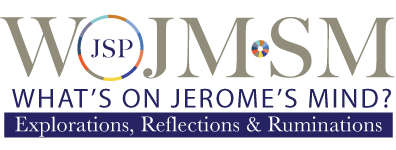Trust Strengthens Relationships
Trust is the greatest asset in a complex system like an organization.
This statement is a common refrain. For a complex system to thrive, the whole system must be fully engaged. The organization requires information to flow seamlessly through existing and new channels. External competition and internal leaders who hold back destroy the organization’s response capacity. Boundaries are malleable, and metaphorically speaking, we never step into the same river twice. A perpetual newness and a need for ongoing renewal require collaboration, participation, openness, and inclusion. (Wheatly, Margaret, and Kellner-Rogers, Myron (1999). “Turning to One Another: The Possibilities of Y2K,” Y2K Citizen’s Action Guide, www.Utne.com.
These requirements can’t happen without trust happening across each of its four dimensions — trusting, trustworthiness, trust culture, and trust socio-economic systems.
Trust Eliminates Second Guessing
Trust is the glue that holds an organization together.
According to C. Monica Capra, Ph.D. We see trust in advisors, CEOs, and employees. Trust in markets. Trust in the law and government. “Indeed, trust is so important that it lessens the need for written contracts, encourages innovation, helps preserve property rights, and facilitates exchanges.”
Fast-moving and change-focused organizations don’t have time for a lot of second-guessing. Trust helps eliminate second-guessing.
In today’s organizations, employees must be able to perform with minimal guidance. They need to value and express autonomy without concern about their needs being met or intentionally undermined. As Rob Lebow and Randy Spitzer outline in their book on accountability, “trust” allows for “freedom and responsibility without control,” and it helps top-down, hierarchical forms of organizational regulation give way to a bottoms-up, self-regulation approach. (Lebow, Rob, and Spitzer, Randy (2002). “Accountability; Freedom and Responsibility Without Control.” Barrett-Koehler: San Francisco.)
When organizations have a shared purpose, employees experience widespread trust among each other. The organization attracts and retains employees who are personally responsible. Organizational leaders and employees can reduce internal organizational friction and enhance the ability of employees and the organization to adapt to an ever-present “new normal,” and thrive in their ever-changing environment.
Trust Makes Life Easier
”…Everything…is more relaxed and more comfortable to achieve.”
According to Susan Heathfield, “When trust exists in an organization or a relationship, almost everything else is easier and more comfortable to achieve.”
When trust is absent, employees are other-directed, and work environments are unpleasant. As mentioned above, trust is a basic need. Once that need is met, other requirements are easier to satisfy.
Also, the presence of trust behaviors like congruence, acceptance, openness, and reliability is a significant predictor of whether employees will be trustworthy and self-directed.
Making Trust Happen!
Trust is a choice, as well as a skill.
Trust results from the interaction among several dimensions – mind, behavior, relationships, and structures, and each element carries its manifestation of trust, even though “trust” has no independent existence. Trust is a byproduct of several ingredients coming together, which means the whole of trust is greater than the sum of its parts.
Take, for example, the role of trust in a movement network as outlined by Leach, Mark, and Laurie Mazur. (Creating Culture: Promising Practices of Successful Movement Networks, The Non-Profit Quarterly, Fall/Winter 2013)
This type of network is a group of organizations that coalesces around an issue because of shared interests and goals; collaborates to address complex problems, focuses on “cross-issue” or “single-issue” matters, and has as its goal “the transformation of power relationships” in society. Trust is “the most fundamental, irreducible task for movement network leaders and members.” It’s the glue that holds networks together, binding leaders, organizations, constituency groups, issues, and sectors.
Network leaders build trust by building and investing in relationships, modeling personal integrity, valuing what each network member brings to the table, ensuring transparency and accountability, and employing clear, straightforward, accessible communications.
Once we understand trust’s dimensions, neurobiology, types, and importance, we realize that trust is a choice, as well as a skill and that at each moment, we can get better at choosing to trust, or not. Patrick Lencioni in “The Five Behaviors of a Cohesive Team” and others highlight that we are free to choose, and we can enhance our ability and capacity to make wise trust choices. More importantly, we can make trust happen!
